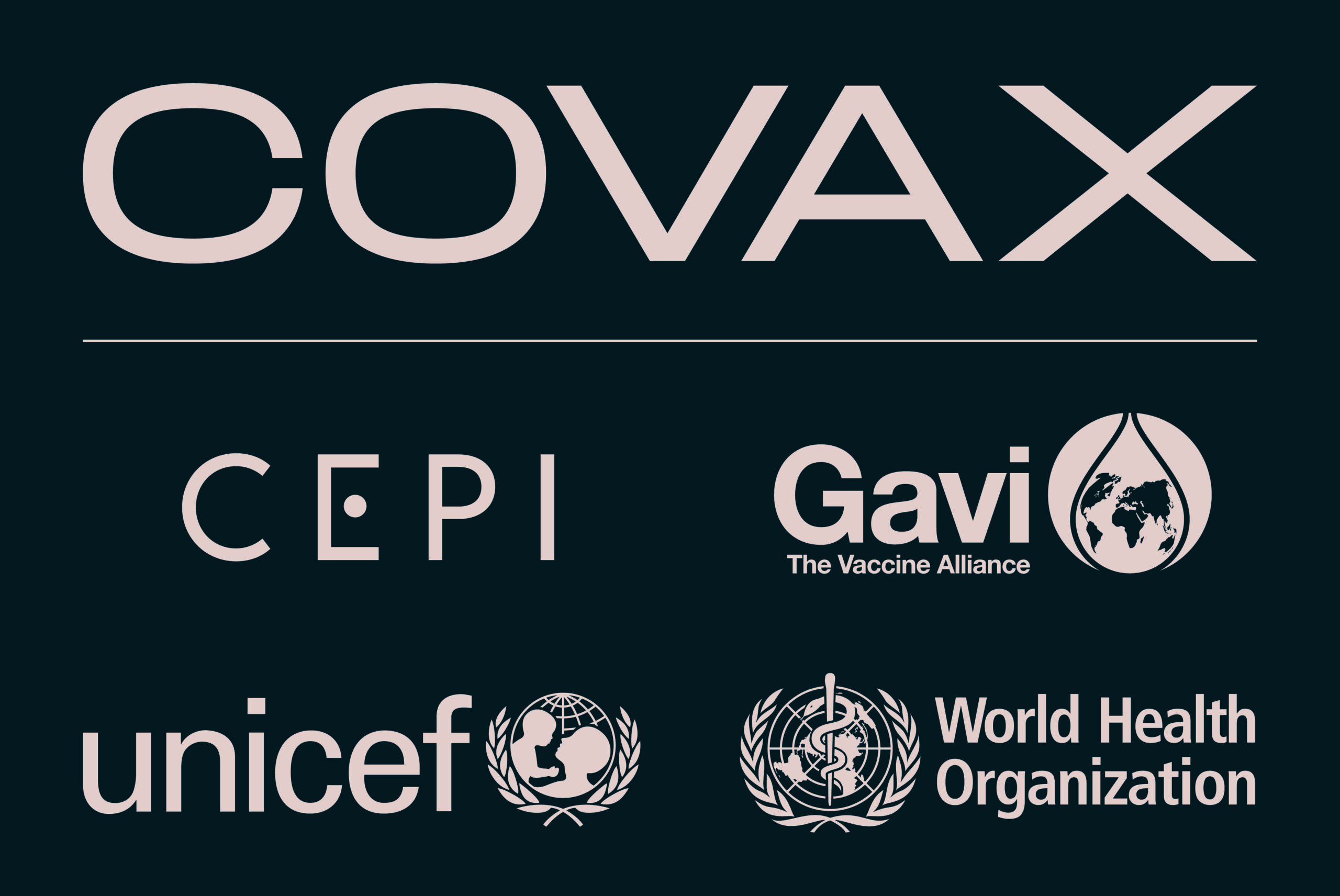NEWS
Achieving 70% COVID-19 Immunization Coverage by mid-2022

January 1, 2022 6:17 p.m.
The Independent Allocation of Vaccines Group (IAVG) has issued a set of recommendations to make the allocation of COVID-19 vaccines more equitable and more effective.
The group was established a year ago, to validate and assess vaccine allocations recommended by WHO’s and Gavi’s Joint Allocation Taskforce (JAT) of COVAX. Since then, much has changed. COVAX was envisioned to be the world’s primary distributor of COVID-19 vaccines, with IAVG serving as an independent referee for needs-based allocations. But rich nations largely sidestepped COVAX, hoarding doses for their own populations and cutting deals directly with low- and middle-income countries. This has made subsequent allocation decisions even more challenging.
The IAVG is concerned that the primary priority use of available vaccines is not consistent with the goals outlined in the Strategy to Achieve Global COVID-19 Vaccination by Mid-2022 in October 2021. The group also notes that it has validated the allocation of only 730 million of the estimated 8 billion doses of vaccine that have been administered globally, which is less than 10%. The rapid emergence of the Omicron variant is a stark reminder of the ongoing threat posed by the evolution of the COVID-19 pandemic and reinforces the critical need to achieve high levels of immunization coverage in all countries, including in highly vulnerable populations, in a timely manner.
The IAVG is therefore calling for:
Achievement of 70% coverage with COVID-19 vaccines in all countries as a global imperative.
As the overall vaccine supply to COVAX is anticipated to continue to grow substantially next year, COVAX will have a greater opportunity to contribute to achieving this goal. Manufacturers, vaccine-producing and high-coverage countries must prioritize vaccine equity and transparency, including the sharing of information about manufacturing capacity and supply schedules with COVAX, as well as vaccine access plans.
All countries to work with COVAX with considerable urgency to optimize the strategic use of the growing vaccine supply.
This means that high-coverage countries will need to establish complementary, “dual-track” approaches that consider both domestic and international goals.
Greater attention must be paid to who is being immunized. Equity must remain the overarching principle, and priority must be given in all countries to ensuring that the primary series is offered first and foremost to all adults and adolescents, in the step-wise manner recommended by the WHO, given that a high proportion of these populations still require primary immunization. However, as more is known about the required vaccination response in the face of Omicron, the need for booster doses and need to immunize children, the COVAX vaccine allocation decisions must consider these recommendations.
Given the global health and epidemiologic consequences of failing to immunize vulnerable populations, including those in humanitarian settings, the IAVG recommends that COVAX continue to work with all manufacturers and countries to immediately increase the availability and uptake of vaccines in these populations.
All countries to have a steady, predictable supply of COVID-19 vaccines, which meet the unique needs of each country. Attention must be paid to addressing prohibitive absorptive challenges in countries that request support.
This may include support for vaccine storage, distribution, administration and/or record-keeping, which may in part be due to competing health and immunization crises [3]. It will be important to have close collaboration between all COVAX partners, donors, and participants.
In order to increase demand for COVID-19 vaccines, ongoing, concerted global, national and local leadership is required to address vaccine misinformation.
Background
The initial COVAX targets were to achieve 3% coverage, and then 20% vaccine coverage through COVAX-secured doses by the end of 2021. These targets were then expanded globally, when WHO released the Strategy to Achieve Global COVID-19 Vaccination by Mid-2022 in October 2021. The new global target is 40% total population coverage by the end of 2021, and 70% total population coverage by mid-2022. However, these figures were from all country sources of supply, not solely from COVAX. COVAX would nonetheless contribute as much as possible to efforts to reach this coverage level in a fair and equitable manner.
None of these targets have been met. Ninety-eight countries have not vaccinated 40% of their population. An estimated 1.4 billion eligible people need to be urgently immunized, many of whom are in the highest risk groups for death and serious illness. These gaps have been most pronounced in low-and lower-middle income countries (LICs and LMICs), with 34 out of 89 Advanced Market Commitment (AMC) participants,representing the countries that are most dependent on COVAX to access COVID-19 vaccines, not achieving the 40% target. The main reason for this has been the severe vaccine supply constraints to COVAX, which persisted until the last quarter of 2021. In the forthcoming months, larger volumes of vaccine are expected to become available, but in most cases the increase in volumes will create challenges in absorption capacity in resource-poor settings. This includes the capacity to receive, store, distribute, administer (due, for example, the lack of trained health personnel or vaccination centers), and to record vaccine use, including wastage.
Another hurdle in achieving the target of 70% total population coverage in all countries by mid-2022 will be demand limits arising from widespread misinformation and its resulting vaccine hesitancy.
Challenges
The COVAX portion of the global supply – The original goal of COVAX was to achieve fair and equitable vaccine access across all 162 current Facility participants, and the initial role of the IAVG was to validate vaccine allocation decision (VAD) proposals that included all participants. Many high-income countries (HICs) entered into direct contractual arrangements with vaccine suppliers, bypassing the COVAX mechanism, and pharmaceutical companies did not prioritize and deliver according to their contractual obligations with COVAX, seriously reducing its supply and making it highly unpredictable. Moreover, high-coverage countries began donating directly to their low-coverage and low-income counterparts, bypassing COVAX. Indemnity and liability-related conditions are added barriers to the vaccine access for the most vulnerable populations. The IAVG has validated the allocation of only 730 million of the estimated 8 billion doses of vaccine that have been administered globally, which is less than 10%.
Additionally, many of the donated doses channeled through COVAX have been earmarked for specific countries, compounding the challenge of achieving the goal of fair and equitable access among lower income countries.
With respect to vaccine allocation, the IAVG recommended and acknowledges that, where feasible, the limited COVAX supply has recently been dedicated to those countries with low estimated total population coverage which are likely relying solely on COVAX for access to COVID-19 vaccines.
Unpredictable supply to COVAX – 1) Procured doses – While those involved in vaccine allocation through COVAX have done their best to direct and redirect available doses, supply unpredictability has strained the system, frustrated participating countries and undermined the allocation decisions of the IAVG. Not all expected doses from COVAX advanced purchase agreements (APAs) have been honoured by vaccine producers according to contractual obligations. 2) Donated volumes – Similarly, promised donations by high-income countries have often been late to materialize or unpredictable. Unexpected additional vaccine allocation rounds have been undertaken after sudden announcements of vaccine availability through donations to COVAX. Worsening the challenge, these sudden donations have often included vaccines with brief expiry windows. These last-minute scrambles, a part massively increasing transaction costs, added considerable stress to already severely resource-strapped countries coping with many competing health and humanitarian crises, straining participants’ ability to plan for the receipt and use of their allocated vaccines. Beyond logistics, the last-minute deliveries undermined countries’ efforts to inform the general public about the vaccines and the communication needed to counteract the misinformation spread by social media.
This way of doing business is not acceptable and needs to end.
Across country and in-country inequity – The Global COVID-19 Vaccination Strategy clearly outlines the step-by-step process needed to achieve the immediate goal of minimizing deaths, severe disease and overall disease burden, and reducing the risk of new variants. Older adults and high-risk populations, all adults, and adolescents have been prioritized in a step-wise manner, while the broader scope of vaccine-use recommendations is still under consideration. For instance, 15 times as many booster doses are currently being administered globally as are primary doses in LICs. In October, the WHO and many other concerned partners noted that data from 119 countries suggest that by September 2021, two in five health and care workers (HCW) were vaccinated on average. But the differences across regions and economic groups remained stark. For instance, less than one in ten have been fully vaccinated in the African region while four in five have been vaccinated in 22 mostly high income countries.
The IAVG is concerned that the primary priority use of available vaccines is not consistent with the goals outlined the Strategy.
More supply but more unknowns – Although the world is expected to have enough COVID-19 vaccine doses by mid-2022 to vaccinate 70% of the world’s population with three doses, uncertainties abound. These include the possible need for variant-specific vaccines, changes to vaccination policies, country preference for some products over others, the programmatic complexity of managing multiple products, and the need for better intelligence on country-level planning and execution. (World Health Organization)
The uncertainty of the required vaccination response to the Omicron variant will necessitate ongoing attention to achieving fairness and equity while requiring flexibility in vaccine allocation and supply management.
Highly vulnerable populations – Our collective health security depends on the health security of all populations wherever they are, and whatever status they may have in individual countries. Among them, people residing in humanitarian settings (refugees, internally displaced persons) are at considerably increased risk of infection with COVID-19 [12] and should be covered by country vaccine allocations.
NEWS
Rep. Atayde: No ghost projects in QC’s first district

3:30 p.m. October 27, 2025
Quezon City First District Representative Juan Carlos “Arjo” Atayde reiterated that there are no “ghost projects” in his district, following a personal inspection of seven flood control and drainage projects in his district.
“There are no ghost projects with us. There’s no ghost in District One. There’s no basis for claims that these exists. Maybe there’s just a need for proper coordination so information about the projects is accurate,” Atayde said after visiting sites in Barangay Bahay Toro, Del Monte, Project 6, and San Antonio.
Atayde’s visit confirmed findings from the Department of Public Works and Highways (DPWH) Quezon City 1st District Engineering Office, which stated in a September 19 letter that “all projects are verifiable on site,” referring to the seven projects questioned due to alleged lack of coordinates.
According to the DPWH, out of 66 alleged ghost projects reported in the media, only seven were located in Atayde’s district, where all of them were found to be completed or ongoing, with proper documentation, correct coordinates, and photographic evidence.
Verified projects included four flood control structures along Culiat Creek and Dario Creek in Barangay Bahay Toro, rehabilitation of Drainage Road 3 in Project 6, the West Riverside Pumping Station in Barangay Del Monte, and a flood control structure along San Francisco River in Barangay San Antonio.
Atayde said five of the seven projects were completed, while two were suspended due to pending issues.
He also visited two additional flood control projects to assess their status – one completed along Dario Creek and one suspended along Mariblo Creek.
Atayde assured to his constituents that public funds were used properly and allegations of ghost projects are “baseless”.
“The projects are not ghosts – they can be seen, touched, and are beneficial. It looks like Halloween came early for some people,” Atayde said.
He also called on those who accused him of benefiting from these projects to verify their information first.
Atayde emphasized he couldn’t benefit from these DPWH projects as they’re already in the National Expenditure Program (NEP), and he couldn’t unilaterally include them in the General Appropriations Act (GAA) as he’s not a member of the bicameral conference committee.
“We all want to end corruption and jail the corrupt, but we won’t succeed if we punish the wrong people,” the lawmaker said.
He further reiterated the DPWH’s assertion that there are no ghost projects in Atayde’s district.
“The evidence speaks for itself, and the evidence speaks the truth,” Atayde said.
NEWS
COA uncovers more fraud in Bulacan flood control projects, files new reports with ICI

6:30 p.m. October 26, 2025
The Commission on Audit (COA) has submitted four additional Fraud Audit Reports to the Independent Commission for Infrastructure (ICI), exposing further irregularities in flood control projects managed by the Department of Public Works and Highways (DPWH) – Bulacan 1st District Engineering Office.
These reports detail cases of mismatched sites, ghost projects, and the use of substandard materials, leading to significant public funds being misspent.
SYMS Construction Trading
Balagtas River Project (P46.35 million): Despite full payment, no real construction was found at the approved site. DPWH representatives directed COA to a different location where a structure made of unsuitable materials and exposed steel bars was observed. DPWH’s own records showed 0.00% completion.
Maycapiz-Taliptip River Project (P92.59 million): This project was reported as 100% accomplished and fully paid, yet COA found no flood control structure during inspection, labeling it a “ghost project.”
L.R. Tiqui Builders, Inc. and M3 Konstract Corporation (Joint Venture)
Barangay Piel, Baliuag Project (P96.50 million): Satellite imagery revealed an existing flood control structure at the approved site even before the contract began. DPWH pointed COA to an incorrect site, where an existing structure failed to meet project specifications.
DARCY & ANNA BUILDERS & TRADING
Barangay Carillo, Hagonoy Project (P74.11 million): Despite a supposed completion date of October 3, 2024, satellite images and COA’s inspection confirmed no structure was built at the approved site.
In all cases, DPWH-Bulacan 1st DEO failed to provide crucial supporting documents to COA, hindering validation of the projects.
Individuals Held Liable
Several individuals from DPWH-Bulacan 1st DEO have been identified as liable, including District Engineer Henry C. Alcantara, Assistant District Engineer Brice Ericson D. Hernandez, and Planning and Design Section Chief Ernesto C. Galang, along with various project engineers and company representatives from the involved contractors.
Those implicated may face charges under the Anti-Graft and Corrupt Practices Act, Revised Penal Code for malversation and falsification of documents, and violations of COA Circular No. 2009-001 and the Government Procurement Reform Act.
These audit findings will support the ICI’s ongoing investigation into government infrastructure project irregularities. COA Chairperson Cordoba’s directive on August 12, 2025, initiated an immediate audit of all DPWH flood control projects in Bulacan from July 1, 2022, to May 30, 2025. This new batch of reports contributes to the 25 Fraud Audit Reports already submitted to oversight bodies, reinforcing COA’s commitment to transparency and protecting public funds, in line with President Ferdinand Marcos Jr.’s call for accountability. Additional reports are expected as the audit continues.
NEWS
DITO delivers superior network performance, turning digital aspirations into possibilities

8:11 p.m. August 28, 2025
DITO Telecommunity showcased how superior connectivity transforms Filipino digital aspirations into achievable realities during the successful media launch of the telco’s latest campaign, Kaya DITO, held at Manila House, Bonifacio Global City, Taguig.
Built on True 5G standalone technology and as validated by a global leader in mobile analytics and insights, Opensignal, as the Philippines’ Fastest Mobile Network, DITO’s ecosystem proves that the Filipino telecommunity’s demand for seamless network connectivity, value-driven services and unified digital experience aren’t distant possibilities, but today’s basic expectations—this challenges what the telco industry has long normalized.
“For too long, outages, dropped calls, and overpriced data have been treated as normal. Let us say it bluntly: It is not normal. Every Filipino has limitless potential when equipped with the right tools, and the game is now changing since DITO has joined the fray and taken up the cause to disrupt the status quo—to deliver inclusive, next-gen technology to the Filipino people. “Kaya DITO!” is our battle cry to symbolically break that cycle, because we truly believe that Filipinos deserve better,” shared by DITO Telecommunity President Eric Alberto in the event.
The Telco that Truly Takes Care of its Users
DITO’s prepaid solutions eliminate the frustration of wasted data through Level-Up Packs with ViLTE technology, making DITO the primary telco offering unlimited DITO-to-DITO HD video calls and unli mobile calls. Combined with Viber and Prime Video inclusions and flexible data packages with longer validity periods, users can now maximize their every peso without worrying about abruptly expiring data allocations.
The Telco that Offers Value-Packed Postpaid Plans
DITOFlexPlan 888 redefines what postpaid should offer—comprehensive inclusions and generous data at prices that make sense for Filipino budgets. Whether you choose SIM-only or device bundles, these plans prove that premium network performance doesn’t have to break the bank, empowering users to pursue their goals without connectivity compromises.
The Telco that Brings True 5G Home Internet Convenience
DITO WoWFi Pro 365 makes home connectivity effortless with a year-long unlimited connection that works when you need it. Families enjoy the convenience of reliable internet for work, study, and entertainment without the inconvenience of data top-ups and complicated installations; just network performance that simplifies your digital life at home. Just ask any of your relatives and friends who have already ditched ordinary WiFi and jumped onto WoWFi— they will tell you what you’ve been missing out on.
The Telco that Built Everything You Need in One App
The DITO App represents one of the industry’s most comprehensive digital platforms, built from the ground up to handle the entire customer journey. From SIM and load purchase to account management and a wide range of OTT apps, users enjoy complete digital control with custom special offers, DITO Rewards points, and 24/7 customer support—managing everything while earning exclusive benefits.

















